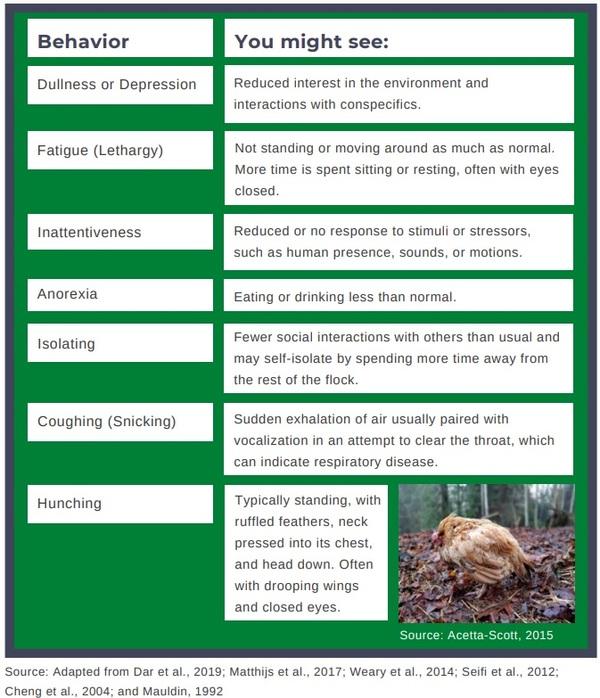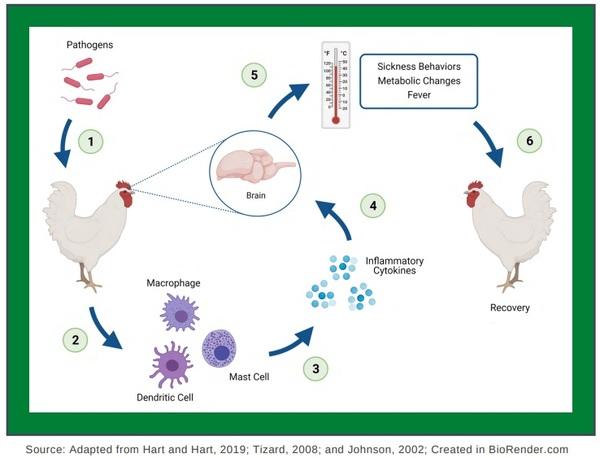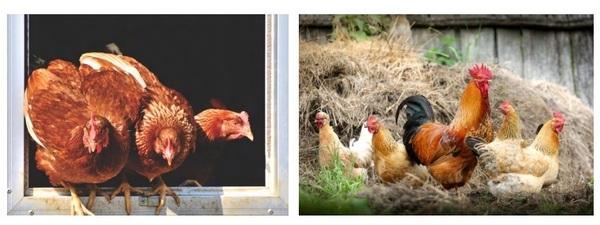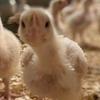Sickness Behavior in Chickens





Accetta-Scott A. 2015. How to Beat Coccidiosis | Keep a Healthy Flock. A Farm Girl In The Making. Accessed May 12, 2021 at https://afarmgirlinthemaking.com/how-to-beat-coccidiosis-and-keep-your-flock-healthy/
Adelman J.S., and L.B. Martin. 2009. Vertebrate sickness behaviors: Adaptive and integrated neuroendocrine immune responses. Integrative and Comparative Biology. 49(3):202-214. doi:10.1093/icb/icp028.
Baxter M., C.L. Bailie, and N.E. O’Connell. 2019. Play behaviour, fear responses and activity levels in commercial broiler chickens provided with preferred environmental enrichments. Animal. 13(1):171-179. doi:10.1017/S1751731118001118
Bracke M.B.M. and H. Hopster. 2006. Assessing the importance of natural behavior for animal welfare. Journal of Agricultural and Environmental Ethics 19:77-89. doi:10.1007/s10806-005-4493-7
Chaiseha Y. and M.E. El Halawani. 2015. Brooding. Ch 31, pages 717-738 in Sturkie’s Avian Physiology. C. G. Scanes. 6th ed. Academic Press, Cambridge, MA.
Cheng H.W., R. Freire, and E.A. Pajor. 2004. Endotoxin Stress Responses in Chickens from Different Genetic Lines. 1. Sickness, Behavioral, and Physical Responses. Poultry Science. 83:707-715. doi:10.1093/ps/83.5.707.
Costa L.S., D.F. Pereira, L.G.F. Bueno, and H. Pandorfi. 2012. Some Aspects of Chicken Behavior and Welfare. Brazilian Journal of Poultry Science. 14(3):159-232. doi:10.1590/S1516-635X2012000300001.
Dar M.A., U. Urwat, S.M. Ahmad, R. Ahmad, Z.A. Kasho, T.A. Dar, S.A. Bhat, P.T. Mumtaz, N. Shabir, R.A. Shah, and M. Heidari. 2019. Gene expression and antibody response in chicken against Salmonella Typhimurium challenge. Poultry Science. 98:2008-2013. doi:10.3382/ps/pey560.
Gomes A.V.S., W.M. Quienteiro-Filho, A. Ribeiro, V. Ferraz-de-Paula, M.L. Pinheiro, E. Baskeville, A.T. Akamine, C. S. Astolfi-Ferreira, and J. Palermo-Neto. 2014. Overcrowding stress decreases macrophage activity and increases Salmonella Enteritidis invasion in broiler chickens. Avian Pathology. 43:82-90. doi:10.1080/03079457.2013.874006.
Hart B.L. and L.A. Hart. 2019. Sickness Behavior in Animals: Implications for Health and Wellness. Pages 171-175 in Encyclopedia of Animal Behavior (Second Edition), Elsevier, the Netherlands. doi:10.1016/B978-0-12-809633-8.20750-4.
Jacob J. Normal Behaviors of Chickens in Small and Backyard Poultry Flocks. eXtension. University of Kentucky, Lexington, KY. Accessed May 12, 2021, at https://poultry.extension.org/articles/poultry-behavior/normal-behaviors-of-chickens-in-small-and-backyard-poultry-flocks/
Johnson R.W. 2002. The concept of sickness behavior: a brief chronological account of four key discoveries. Veterinary Immunology and Immunopathology. 87:443-450. doi:10.1016/s0165-2427(02)00069-7.
Johnson, A.L. Reproduction in the Female. 2015. Ch 28, pages 635-665 in Sturkie’s Avian Physiology. C. G. Scanes. 6th ed. Academic Press, Cambridge, MA.
Li M., J. Wu, and Z. Chen. 2015. Effects of heat stress on the daily behavior of Wenchang chickens. Brazi. J. Poult. Sci. 17: 559-566.
Matthijs M.G.R., J.F. Nieuwenhuis, and R.M. Dwars. 2017. Signs Indicating Imminent Death in Escherichia coli-Infected Broilers. American Association of Avian Pathologists. 61(3):316-324. doi:10.1637/11509-100316-RegR.
Mauldin J.M. 1992. Applications of Behavior to Poultry Management. Poultry Science. 71:634-642. doi:10.3382/ps.0710634.
Millman S.T.M. 2006. What is sickness motivation, and why does it matter? Allen D. Leman Swine Conference. Minneapolis, MN. University of Minnesota, Twin Cities. 155-157.
Nicol C.J. 2015. The Behavioral Biology of Chickens. Centre for Agriculture and Bioscience International. Oxfordshire, UK. doi:10.1079/9781780642499.0000.
Olsson I.A.S., I.J.H. Duncan, L.J. Keeling, T.M. Widowski. How important is social facilitation for dustbathing in laying hens? Applied Animal Behaviour Science. 79:285-297. Doi:10.1016/S0168-1591(02)00117-X
Seifi S., K. Asasi, and A. Mohammadi. 2012. An experimental study on broiler chicken co-infected with the speciments containing avian influenza (H9 subtype) and infectious bronchitis (4/91 strain) viruses. Iranian Journal of Veterinary Research. 13(2):138-142.
Tizard I. 2002. The Avian Antibody Response. Seminars in Avian and Exotic Pet Medicine. 11(1):2-14. doi:10.1053/saep.2002.28216.
Vizcarra J., R. Alan, and J. Kirby. 2015. Reproduction in Male Birds. Ch 29, pages 667-693 in Sturkie’s Avian Physiology. C. G. Scanes. 6th ed. Academic Press, Cambridge, MA.
Weary D.M., J.M. Huzzey, and M.A.G. von Keyserlingk. 2014. BOARD-INVITED REVIEW: Using behavior to predict and identify ill health in animals. Journal of Animal Science. 87:770-777. doi:10.2527/jas.2008-1297.
Zhang J. and J. An. 2007. Cytokines, Inflammation, and Pain. International Anesthesiology Clinics 45(2):27-37. doi:10.1097/AIA.0b013e318034194












.jpg&w=3840&q=75)